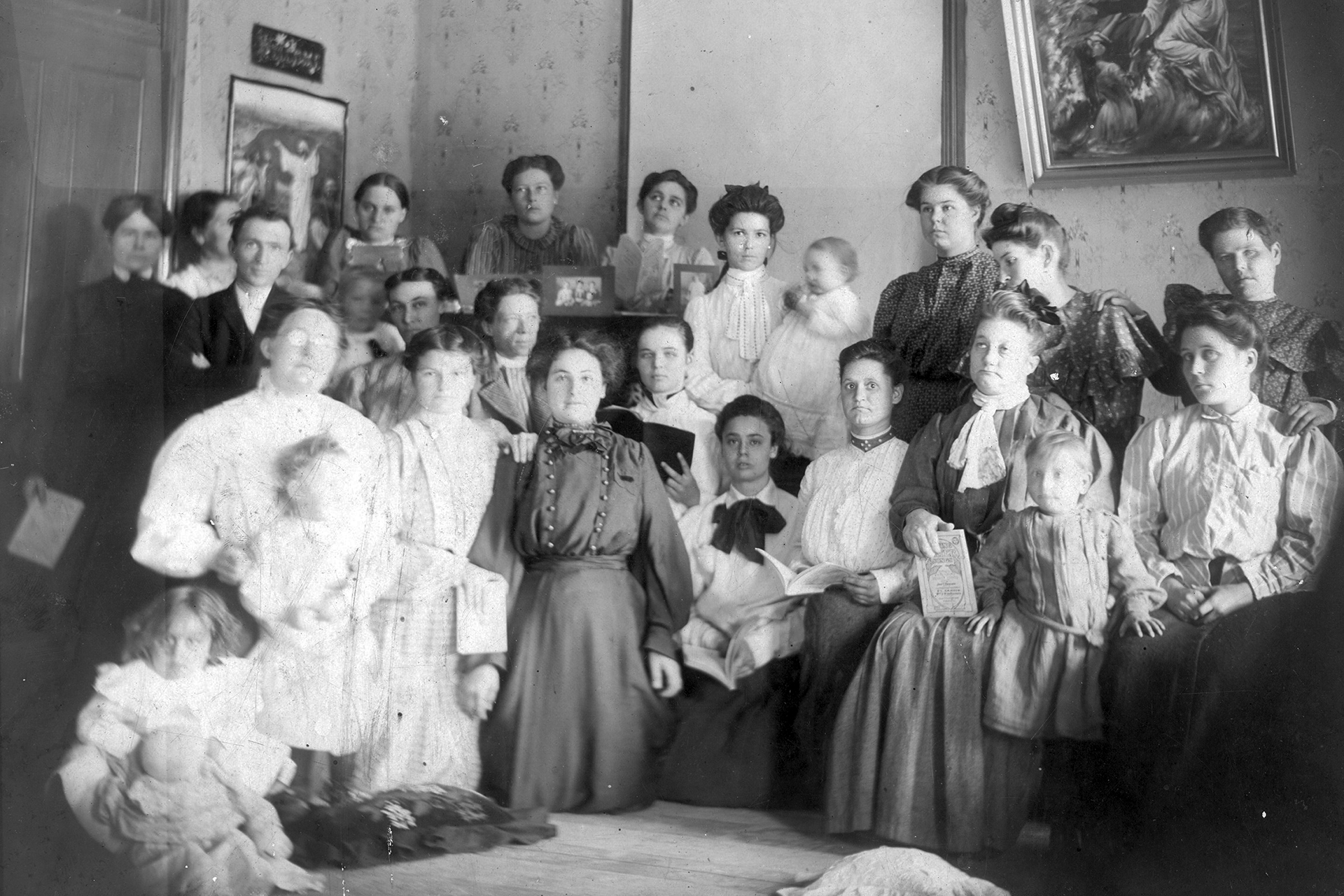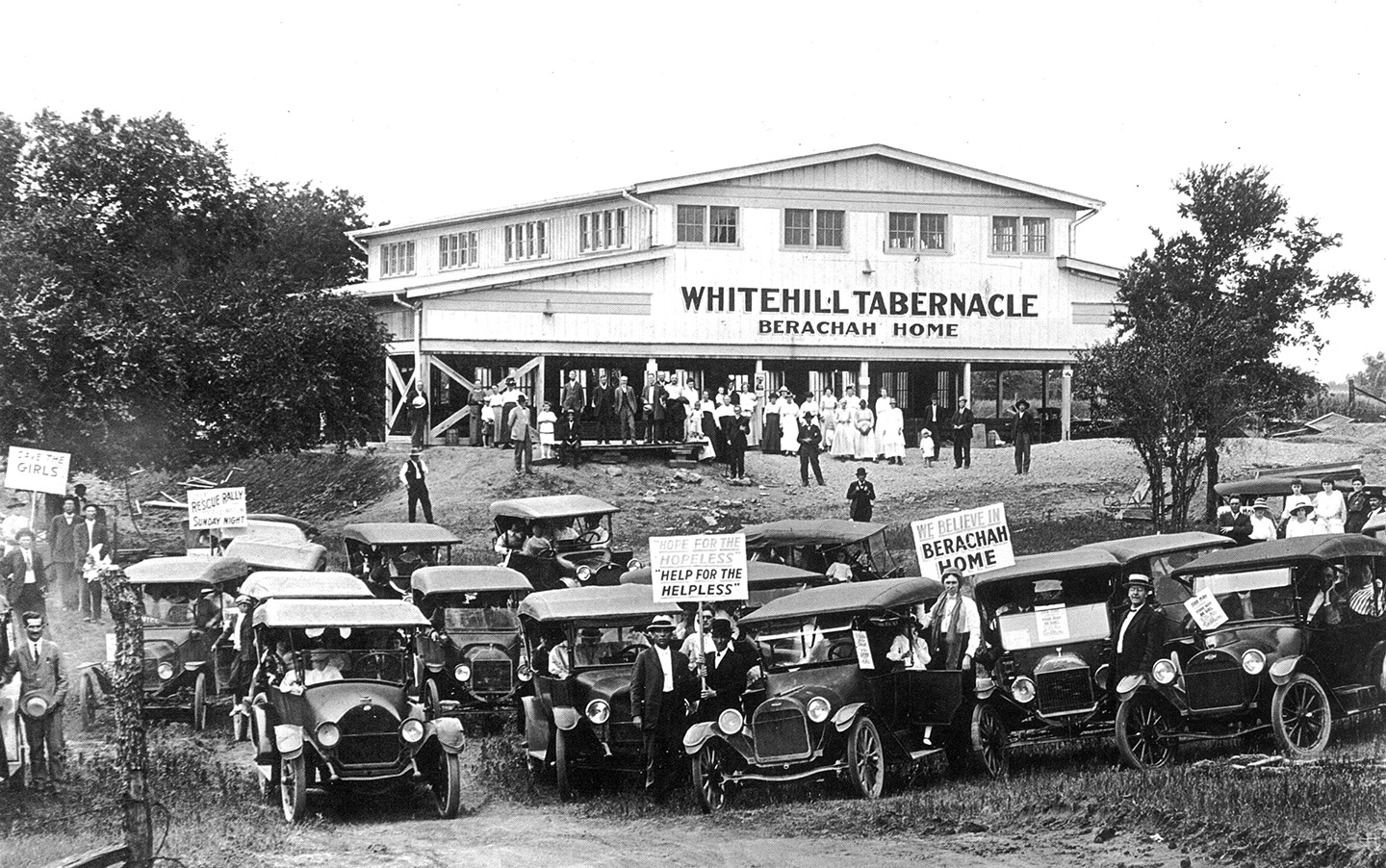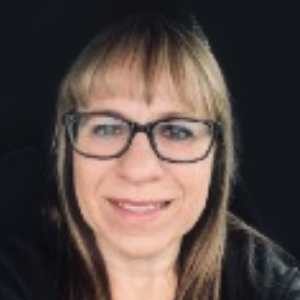
The Berachah Home Part 1 of 3: A Historical Perspective
The history surrounding the Berachah Industrial Home for the Redemption of Erring Girls is one of Arlington’s most interesting: a compelling story offering both mystery and intrigue. I first learned about the Berachah Home when a friend took me to the cemetery in Doug Russell Park. The historical marker left me wanting to know more. Fortunately, a treasure trove of information was housed just a short walk away in the main library at the University of Texas at Arlington. After my first trip to the library, I knew I found the topic for my master’s thesis. Still, I had no idea how far reaching the narrative would become.
The collection at the UTA library led me to the Church of the Nazarene’s archives in Lenexa, Kansas. On the surface both archives provided the basic facts about the Berachah Home and its founders. For instance, James Tony Upchurch was born near Waco, Texas in 1870; although he credited his mother and stepfather for teaching him right from wrong, he did not convert to Christianity until April 11, 1890. On the other hand, Maggie Mae Adams, who was born in 1873 in Tennessee, grew up in the Methodist Church. Their paths eventually crossed in Waco, in 1890 while they were working with the Methodist Church to help women in need. In 1892, they cemented their future in marriage and committed to continue their work helping others. Even more importantly, her father was a staunch supporter of their marriage and their life plan. Mr. Adams even provided the initial funds required to purchase the acreage needed to build the Berachah Home. And so, on May 14, 1903, Reverend Upchurch and his wife Maggie opened the Berachah Industrial Home for the Redemption of Erring Girls in Arlington. The home served young women in Texas and surrounding states until 1935.
However, these few facts told me little about the home. I began to read Upchurch’s publication, the Purity Journal, with his audience in mind. He was, of course, writing for a contemporary audience, and his readers were familiar with current events little known today. From this vantage point, the articles as well as the advertisements found in the Purity Journal indicate that there was a loose network of homes in the United States similar to the Berachah Home. As my research continued, it became apparent that the history of the Berachah Home needed to be placed in a context that reached far beyond Arlington. Further research revealed that while there were at least 200 homes for young women established across the country in the late 1800s, only a few have been studied by historians. There seems to have been little uniformity in their day-to-day functions, but they were all founded on the same principles: to heal the nation and to help women in need by instilling Christian values.
Following the Civil War, the United States experienced significant changes that led to the establishment of the homes for women. The end of slavery, the advent of Reconstruction, continued western expansion, and the Industrial Revolution transformed almost every aspect of American life. The traditional farming-based economy gave way to one focused on industrial growth. In turn, people’s hopes of finding a better life in the cities led to rapid urbanization and an unexpected shift in America’s sociocultural landscape.
One area of considerable change during this period involved gender roles. Women were a large part of the urban migration, including young single women who searched for the glamor and sophistication of the larger cities and were willing to accept jobs outside the domestic realm. After all, industrialization made it possible for women to succeed at jobs that once required great physical strength. Women now had new opportunities and freedom both at work and in their social activities. In reality, however, there were not enough jobs to support the influx of people. This period of rapid change proved too much for the leadership of the United States to handle; existing political and economic systems could not contend with the sociocultural shifts. Displaced people were left poor, hungry, and homeless, thus, relegated to live in the city slums. As a result, prostitution became the main source of money for many women.
While the United States was stumbling into the 20th century, a parallel evangelical movement was organized in an attempt to save the nation from itself. Originally, evangelicals went into the city slums with Bibles in hand to end prostitution and any other form of vice. It was through these missions that the evangelicals became aware of the unwed mother population. Building places to protect and reform the women was soon to follow.

The evangelical movement also reached into the political realm, and one of the biggest names was Anthony Comstock. In what became known as the “Comstock Law,” he successfully lobbied the United States Congress to strengthen the nation’s antiobscenity laws to make the distribution of information concerning both contraception and abortion illegal for the first time, in 1873. Comstock enjoyed great public support for this legislation as well as his push for the formation of “purity alliances” on the national stage.
These were the circumstances in which Reverend James Tony Upchurch (1870-1950) and Maggie Mae Adams (1873-1963) were born and raised. Most of what is known about their early years comes from what Upchurch wrote in his Purity Journal publication. In a series of autobiographical articles titled “How I Became a Rescue Worker: And Some of My Thrilling Experiences for Ten Years,” Upchurch explains that his transformation occurred at age 7. While selling newspapers in Waco, he saw his first “outcast”: a young woman kicking and screaming as she was dragged to jail. Upchurch claimed this memory never left him.
In this series, Upchurch made it clear that he was not well educated and had learned through experience how to treat the less fortunate. In so doing, he placed himself among the people he was helping. Even more, Upchurch managed to use his life’s story to mirror the narrative of the evangelical movement. He was born in poverty, had a few rough years as a teenager, then found fulfillment with his own salvation. His testimony offered hope.
After his conversion, Upchurch quickly became a part of the national evangelical movement that would shape the rest of his life and those around him. There are blank spots. For example, he does not mention obtaining a formal education, whether secular or religious. Additionally, it is not clear when and where he was ordained. He simply credits God with filling him with the Holy Spirit. Still, he could not have used the title of reverend without the support of the church.
What about Maggie? She stayed true to her commitment to stand by her husband as they ministered to the poor; there is no indication that this ever changed. Actually, the historical record shows that together they thrived in this atmosphere. They traveled to purity conferences held throughout the United States as well as to other homes for troubled young women. As a result, they had the opportunity to serve with some pivotal members of the evangelical movement, including serving on the executive commieee of the National Purity Federation alongside Anthony Comstock.
Even with all their travels and activities, the reverend and his wife still had time to help the needy. They ran a mission outpost in Waco, then transferred to the Oak Cliff area of Dallas. Eventually, they used their experience and knowledge to establish the Berachah Industrial Home for the Redemption of Erring Girls in Arlington in 1903, a bit late, given that most of the other homes were established before 1900. However, as an active member of the evangelical movement, Upchurch had the advantage of visiting and critiquing other homes; he was observant enough to notice what did and did not work elsewhere. This included administrative functions as well as the best narratives required to attract and optimize funding. In fact, the Berachah Home enjoyed several years of success, while other homes floundered.
Religion was the driving force of the Berachah Home. In their publications, Reverend Upchurch and Maggie maintained a humble image and never forgot to give God the glory. While Upchurch was an energetic participant in the evangelical movement, in some areas his philosophy differed from the norm. This is the subject of part 2 of this article.

